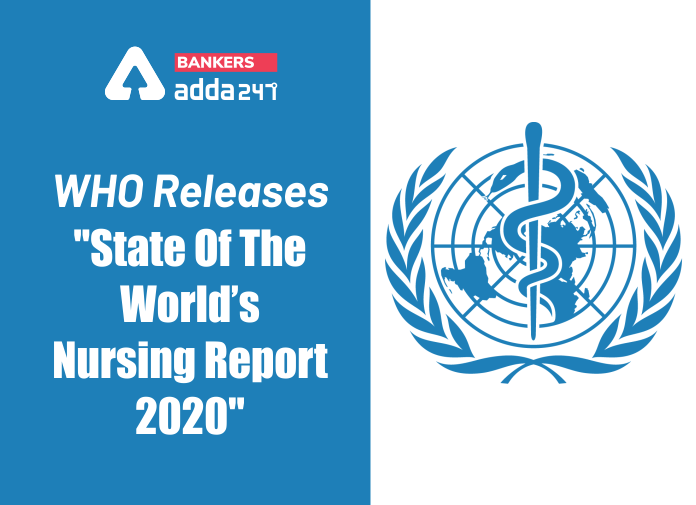The “State Of The World’s Nursing Report-2020” has been released by the World Health Organization. The report outlines the role and contributions of nurses with respect to the WHO “triple billion” targets. The report aims to strengthen the nursing workforce to improve health for all, and to strengthen the primary health care workforce as the Covid-19 pandemic emphasizes the urgent requirement of strengthening the global health workforce. The report also identifies the gaps in the nursing workforce and urges to invest in nursing education, jobs, and leadership to strengthen nursing around the world.
Also Check,
- IMF releases “World Economic Outlook”
- GoI reviews extant Foreign Direct Investment (FDI) policy
- Impact of Energy Efficiency Measures For Year 2018-19
About “State Of The World’s Nursing Report-2020”:
The World Health Organization has rolled out the “State Of The World’s Nursing Report-2020”. This is the first State of the world’s nursing report and it presents much to celebrate about the nursing workforce. The report has been developed by the World Health Organization in partnership with the International Council of Nurses and the global Nursing Now campaign along with the support of governments and wider partners. The report provides a compelling case on the value of the nursing workforce globally. The report gives us the latest proofs on policy alternatives for the global nursing workforce. It also urge the governments along with all relevant stakeholders to invest in nursing education, jobs, and leadership.
Key findings of the report:
- According to the report, nursing is the largest occupational group in the health sector which accounts for around 59% of the health professionals.
- It states that the global nursing workforce is 27.9 million, of which 19.3 million are professional nurses.
- The global shortage of nurses, estimated to be 5.9 million nurses in 2018.
- It also identified the ageing health workforce patterns in some regions which is threatening the stability of the nursing stock.
- To address the shortage of nurses by 2030 in all countries, the report suggested an increase of total number of nurse graduates by 8% per year on average including an improved capacity to employ and retain these graduates.
- It also identifies that the nursing remains a highly gendered profession with associated biases in the workplace.
Conclusion:
The report concludes that governments are in dire need to invest in a massive acceleration of nursing education, creation of nursing jobs as well as leadership. It also states that in the absence of nurses, midwives, and other health workers, countries cannot win the battle against outbreaks, or gain universal health coverage. Investment in nurses will not only contribute to health-related targets, but also to education, gender, decent work and economic growth.
Click Here to Register for Bank Exams 2020 Preparation Material
Also Check,



 Weekly Current Affairs One Liners 23rd t...
Weekly Current Affairs One Liners 23rd t...
 CSIR CRRI Typing Test 2025 Date for JSA ...
CSIR CRRI Typing Test 2025 Date for JSA ...
 Can Final Year Students Apply for SBI PO...
Can Final Year Students Apply for SBI PO...


